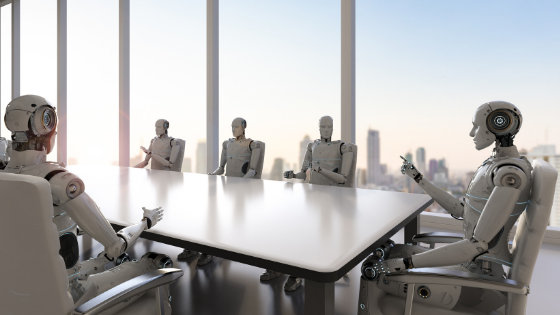Keeping your workplace safe is a full-time job in its own right. The problem is that you’ve got a full-time job already and staff to keep track of on top of it.
This is where AI has the power to change the landscape of workplaces like yours. AI workplace safety isn’t a futuristic idea – it’s right around the corner. Here’s how AI can make your workplace stronger.
Categories of AI
There are three categories of AI:
- Artificial Narrow Intelligence (ANI) - ANI is focused on one narrow task with smartness. It learns how to do that one task as efficiently as possible. A common example is speech recognition software. This is the type of AI that humans have already achieved.
- Artificial General Intelligence (AGI) - AGI is the next step up. It applies smartness and efficiency to a variety of tasks as needed, but it can also learn how to improve itself. This type of AI is considered to be comparatively as intelligent as a human brain. It’s the type of AI that lies ahead, the type we haven’t made yet but may be closer than we think.
- Artificial Super Intelligence (ASI) - If AGI is as smart as a human, ASI is smarter. It’s a type of AI that can think in abstractions to complex for humans to comprehend, thus solving problems that humans cannot.
Right now, we have access to ANI, though AGI is theoretically around the corner. To understand how the available AI can help stop accidents, you have to understand why accidents occur.
Why Workplace Accidents Happen
Safety-related accidents can result from any number of random accidents and bad luck, but it’s most often the result of:
- Human error
- Incomplete information
- Lack of preparation
- Working when unwell or poorly rested
- Neglecting safety procedures
These can be boiled down into two basic categories: internal and external factors.
How AI Can Reduce Accidents
While you can’t control your workers’ internal lives, you can control for external factors (and limit the fallout of internal factors).
The Internet of Things (IoT) excels at collecting data. It does this through a series of interconnected sensors and devices. Taken together, these sensors can monitor everything from the location of humans to how equipment is working.
This makes it easy to monitor potentially hazardous environments with far greater efficiency than a human could.
The gap to bridge is analyzing that data quickly and effectively. This is where AI can help. IoT can collect data and ANI can analyze it in real time. This doesn’t need to be a complex procedure – as long as the AI has a set of parameters to follow, it can alert you when you’re outside those safe parameters.
In the future, more advanced AI can go one step further. Instead of just recognizing hazards as they happen in real time, AIs can help predict disasters before they happen.
Navigating AI Workplace Safety
Artificial intelligence has come a long way since the first computers. The AI programs of today can already contribute in huge ways to workplace safety. If your team is ready to invest in AI workplace safety, you’re investing in a safer future for your workers.
We know that if you want to stay on top of your biggest safety challenges, you have to be prepared to innovate. You have to come up with novel solutions to stay one step ahead of evolving safety issues.
That’s why we’re proud to provide top-of-the-line safety software solutions for more than a dozen industries. Want to find out how we can help?

